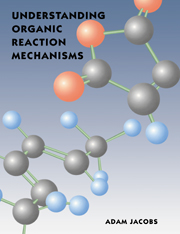Book contents
Summary
If you have read the first eight chapters of the book, you will by now have learnt much about the basics of reaction mechanisms. However, in much the same way that no-one would read a book on how to play the violin and then immediately expect to be able to play the solo part in Beethoven's violin concerto, you may find it takes a little practice to become entirely proficient in writing mechanisms for reactions. As you proceed with your study of chemistry, it will not be difficult to obtain that practice, as you will encounter a great many reactions. If you think about the mechanism of each new reaction, you will soon find the process becomes more and more automatic. It is certainly easier to become a virtuoso with reaction mechanisms than with the violin!
To start you on your way, in this last chapter we will look at four reactions with interesting mechanisms. These have all had much work done on them to elucidate their mechanisms, and it will be instructive to see how the mechanisms were discovered. The discoveries were, of course, made from experiments, but the experiments themselves were designed from a knowledge of plausible mechanisms and knowing the right questions to ask.
As with Section 8.3, you will get more out of this chapter if you try to stay one step ahead of the text, and to think about what the mechanisms might be and what experiments might be done before they are described.
- Type
- Chapter
- Information
- Understanding Organic Reaction Mechanisms , pp. 247 - 270Publisher: Cambridge University PressPrint publication year: 1997



